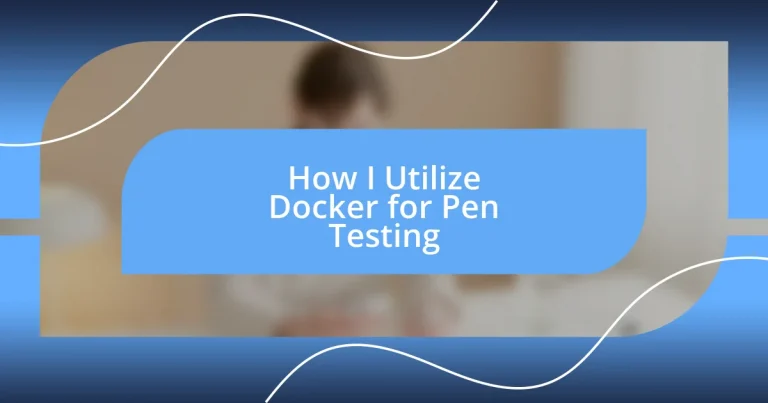Key takeaways:
- Docker streamlines the deployment of penetration testing environments by allowing the creation of pre-configured containers, enhancing flexibility and control.
- Customizing Docker containers for specific tasks, such as integrating various pentesting tools, optimizes workflows and reduces last-minute technical issues.
- Utilizing Docker networks for isolation improves organization and safety during tests, enabling effective collaboration while minimizing resource interference.
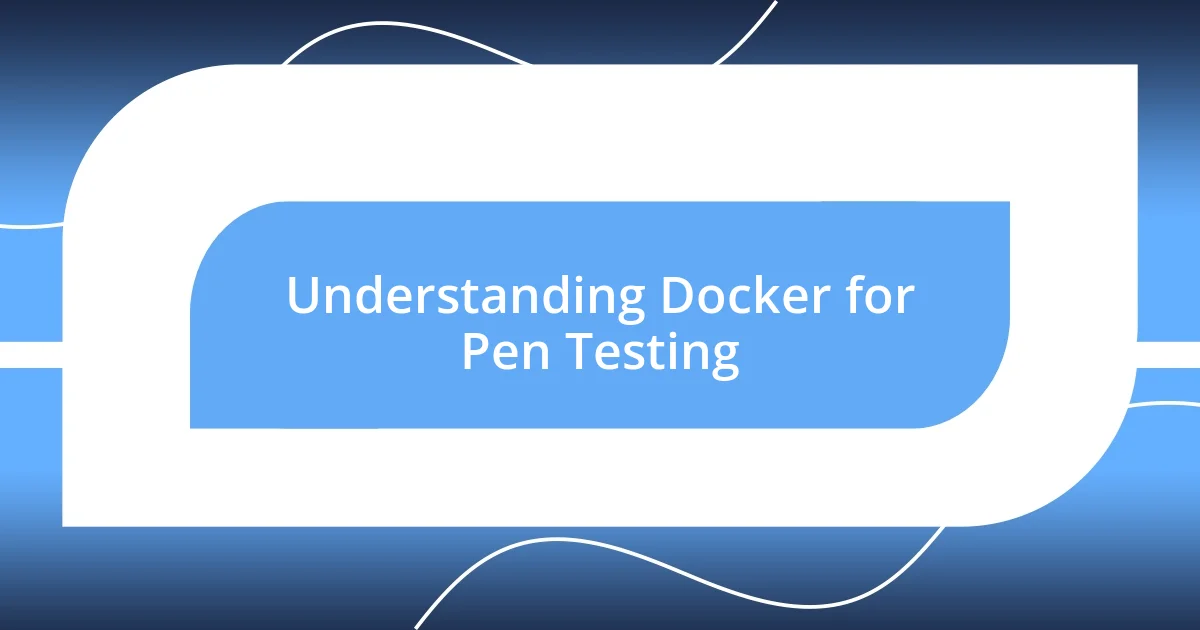
Understanding Docker for Pen Testing
When I first started using Docker for penetration testing, I was amazed at how it simplifies the deployment of testing environments. I remember wrestling with setting up various tools on my local machine, which often resulted in software conflicts or mismatched dependencies. Docker changes that by allowing me to spin up containers pre-configured with all the tools I need, streamlining the entire process.
It’s fascinating how Docker containers encapsulate everything I require to conduct thorough testing. For instance, I often create a container with Kali Linux, which is loaded with exceptional pentesting tools like Metasploit and Burp Suite. I can run multiple containers for different environments—such as web apps or networks—without any fear of interference. Doesn’t it feel liberating to have that level of control and flexibility at your fingertips?
Moreover, the concept of image versioning in Docker really resonates with me. I can quickly revert to a previous version of my testing environment if something goes wrong. It’s almost like having a safety net during my tests. Have you ever lost track of changes during a pentest? That uncertainty can be stressful, but with Docker, I feel more secure knowing I have a reliable snapshot of my setup to fallback on.
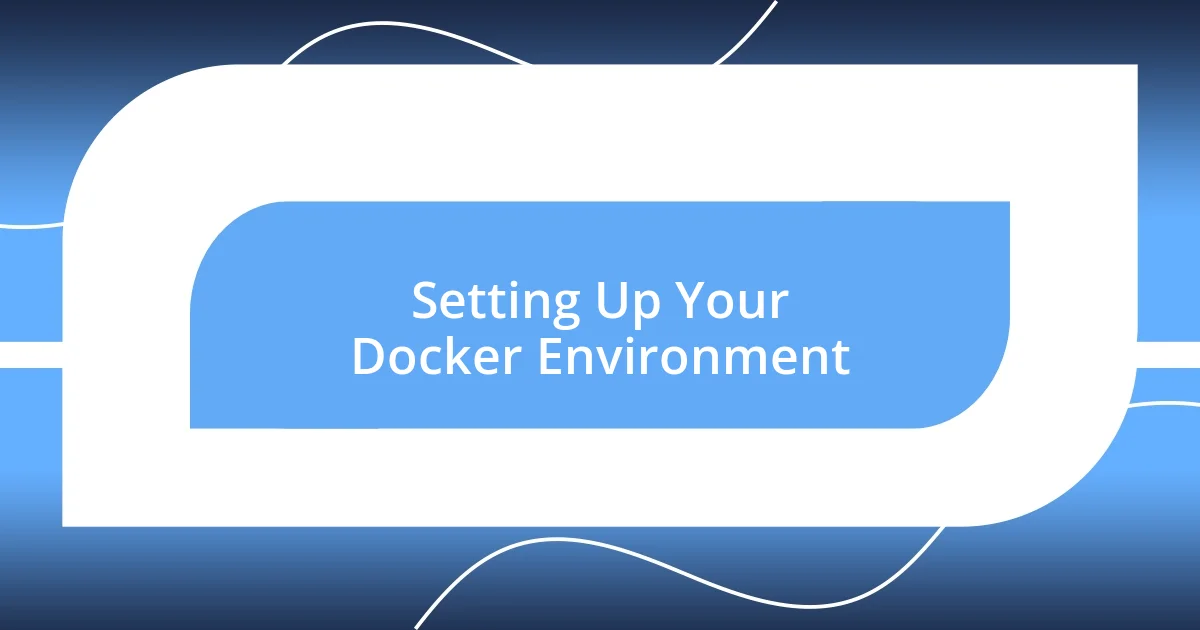
Setting Up Your Docker Environment
When setting up your Docker environment, the first step is to install Docker on your machine. Personally, I remember the relief I felt when I finally configured Docker Desktop on my system; it opened up a new realm of possibilities for my pen-testing activities. Once you have Docker running smoothly, you’ll want to pull pre-built images that are tailored for penetration testing, like Kali Linux or specific tool images like Metasploit. This process, while straightforward, is incredibly gratifying as it allows you to see the power of Docker in action.
Here’s a quick checklist to get your Docker environment ready for penetration testing:
– Install Docker: Download and install Docker Desktop based on your OS.
– Pull Relevant Images: Use commands like docker pull kalilinux/kali-rolling to grab your testing images.
– Create Necessary Networks: Leverage the docker network commands to isolate your testing environments.
– Run Containers: Start your containers using the docker run command, making sure to allocate sufficient resources.
– Manage Data Volumes: Utilize Docker volumes for persistence, ensuring no data is lost between sessions.
These steps not only set up your testing lab but also arm you with the flexibility to experiment without the risk of damaging your primary system. I vividly recall the first time I successfully created a sneaky little testing environment; it felt like I had a secret weapon at my disposal.
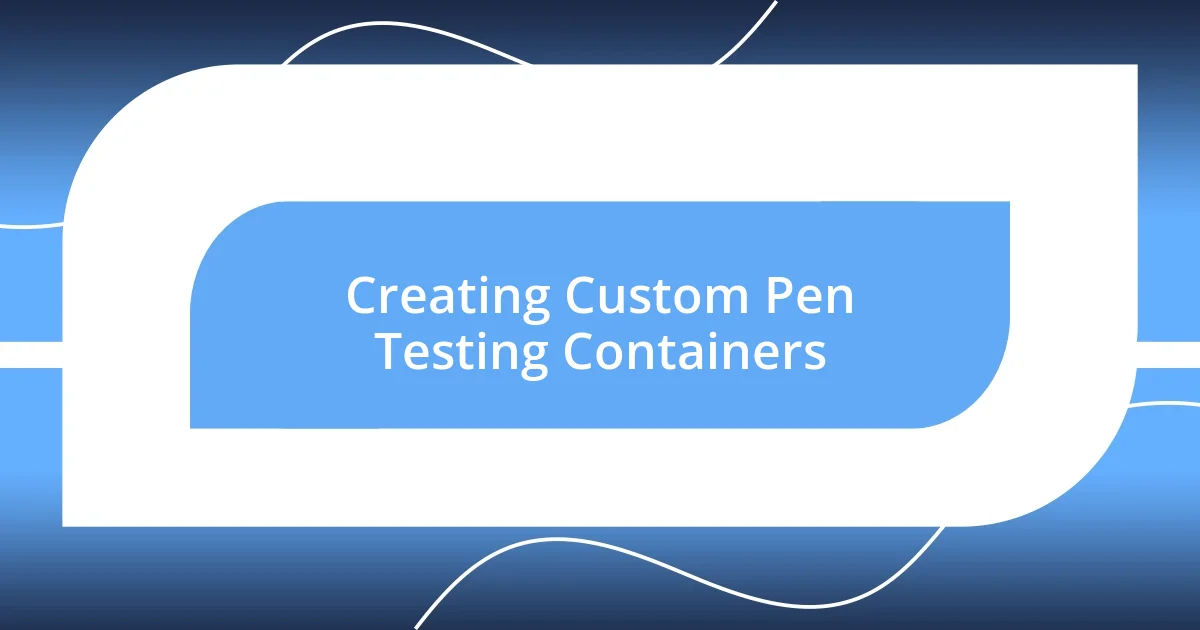
Creating Custom Pen Testing Containers
Creating custom penetration testing containers is a thrilling aspect of using Docker. I often find myself experimenting with various configurations and setups to tailor my containers for specific tasks. For example, I once created a container specifically for Wireshark analysis, complete with all necessary plugins and configurations. I remember how satisfying it was to see the entire setup come together seamlessly, allowing me to dive directly into deep packet inspection without the hassle of additional installations.
One of the most rewarding aspects of working with custom containers is the ability to streamline my testing workflow. When I develop a custom environment for a particular type of engagement, I can ensure that all required tools are pre-installed and configured just the way I like them. It’s comforting to know that when I initiate a test, everything is precisely where it should be. This level of preparation saves me time and, frankly, a whole lot of stress during assessments. Have you ever faced those dreaded last-minute tech issues? With Docker, those occurrences have significantly decreased for me.
Moreover, optimizing the container for specific pen-testing scenarios gives me a competitive edge. I distinctly remember a time when I customized a Docker container that integrated both Metasploit and Nmap tools. This setup allowed me to run network scans and exploit vulnerabilities in quick succession. It felt like a well-oiled machine during the testing phase. Do you have any use cases in mind where Docker might make your pentesting more efficient? I bet with a little experimentation, you’ll find some exciting improvements as well!
| Container Type | Main Tools |
|---|---|
| Kali Linux | Metasploit, Burp Suite |
| Wireshark Analysis | Wireshark with Plugins |
| Network Scanning | Nmap, Metasploit |
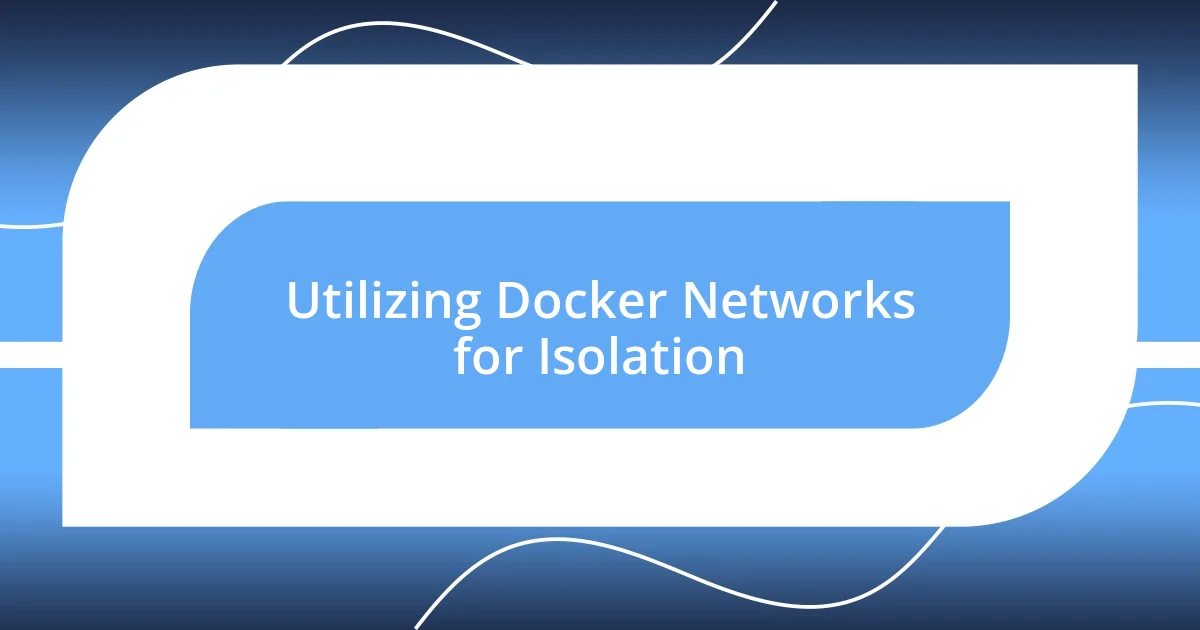
Utilizing Docker Networks for Isolation
When it comes to utilizing Docker networks for isolation, I’ve found it to be a game changer in my pen-testing labs. By setting up custom networks, I can create distinct environments that mimic real-world scenarios without risk. I remember the first time I used a custom bridge network; it was like building my own little digital fortress, where I could control traffic and security settings precisely. Have you ever considered how isolation can significantly reduce the clutter and confusion during tests? It truly makes a difference.
One of my favorite things about Docker networks is how they allow me to segment my tools and targets efficiently. For instance, I once dedicated an entire network just for my Metasploit container, keeping all my scanning and exploitation tools neatly organized away from my vulnerability assessment tools. This separation ensured that the resources didn’t interfere with each other—an invaluable lesson I learned after experiencing a few frustrating overlaps in the past. Doesn’t it feel more professional when everything is compartmentalized and tidy?
Experimenting with these isolated environments also opens doors for safe collaboration. At one point, I invited a colleague to join me in testing within a shared Docker network while keeping our environments isolated from each other. It was a revelation! We could engage in effective brainstorming without fear of unintentional disruptions or data leaks. Sometimes, I think back to how chaotic my earlier testing sessions were and can’t help but feel grateful for the clarity and organization Docker networking has provided me. How does managing connections and isolation enhance your pen-testing experience? The possibilities are truly exciting!
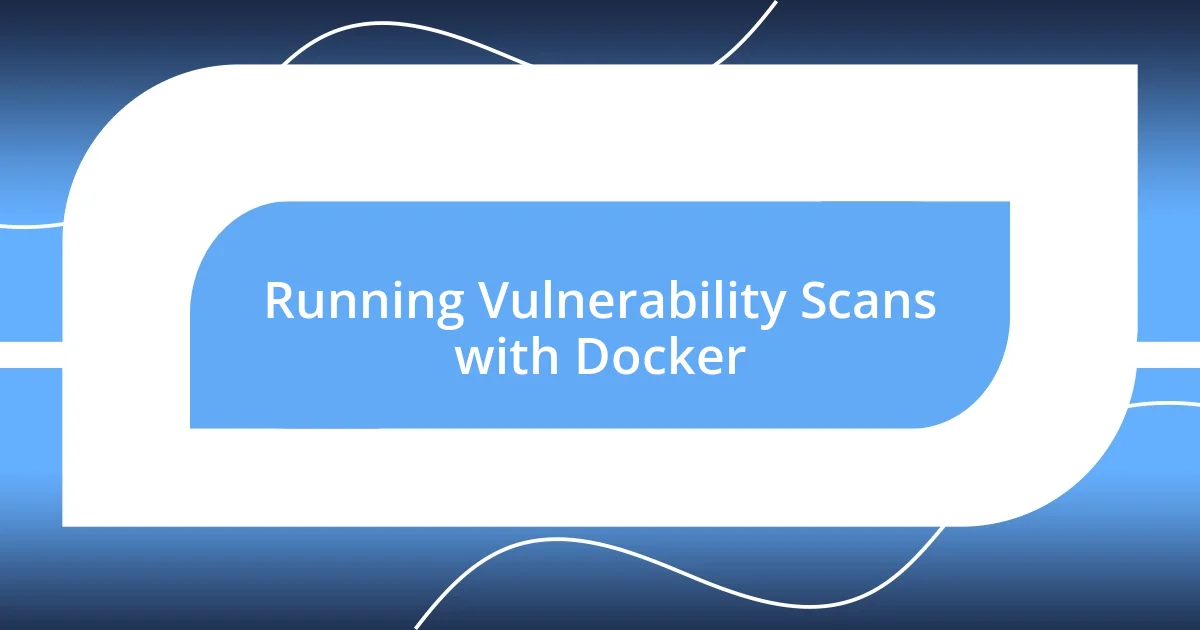
Running Vulnerability Scans with Docker
Running vulnerability scans with Docker has drastically transformed my approach to pen testing. I remember when I first launched a vulnerability scanner in a Docker container; it was like flipping a switch that illuminated a hidden part of my testing process. The isolation of the environment allowed me to focus on the scan without the usual distractions, and seeing the results pop up in real time was both thrilling and reassuring. Have you experienced that rush of anticipation when waiting for scan results? It’s a moment of both anxiety and excitement.
When conducting scans, I often leverage tools like OpenVAS or Nikto within my Docker setups. One time, I integrated these tools into a single container, creating a perfect amalgamation for vulnerability assessments. The ability to spin up these comprehensive environments on demand means I can tackle different scopes with ease. The flexibility that Docker provides allows me to tailor each scan according to specific parameters of the engagement. Have you thought about how the right tool configuration can impact your results? I’ve seen firsthand how it can mean the difference between a thorough assessment and a missed vulnerability.
Moreover, I’ve started chaining scans together in a systematic way through Docker. For instance, I once linked a vulnerability scan to an automatic reporting tool within my container setup. The seamless transition from detection to documentation was simply brilliant, saving me hours of tedious work afterward. It’s moments like these that make me appreciate the efficiency Docker offers in running vulnerability scans. Do you find yourself spending too much time compiling reports? With Docker, those issues melt away, allowing me to focus on what really matters: improving security.












